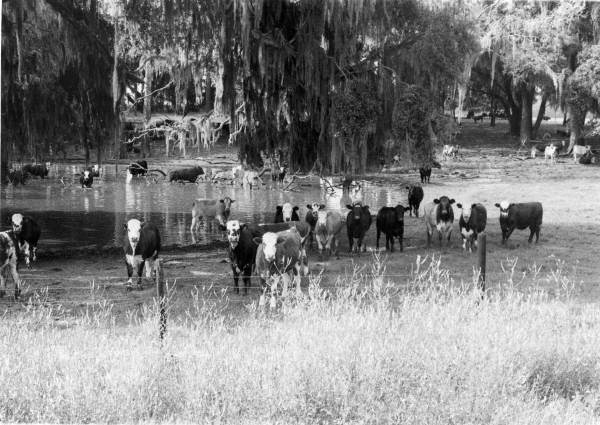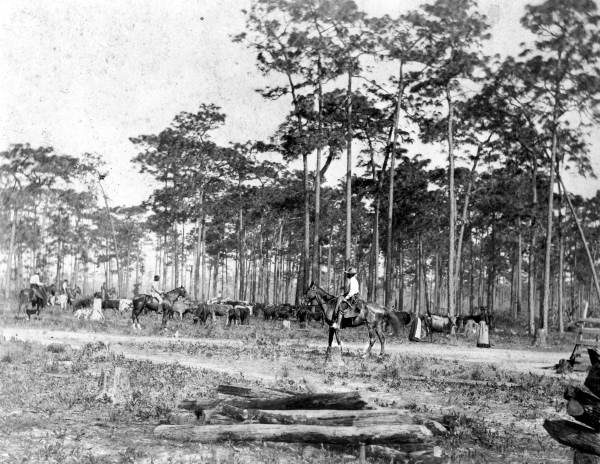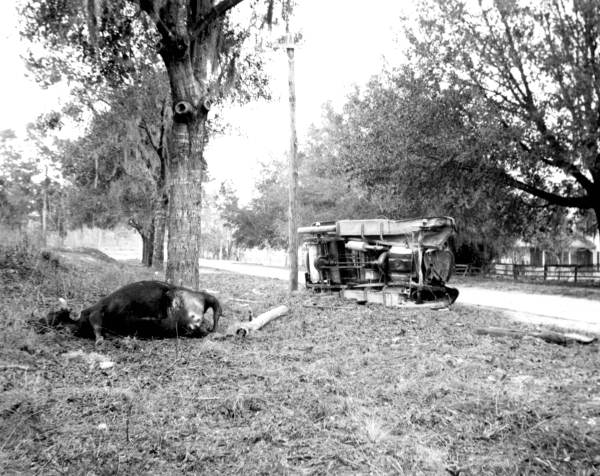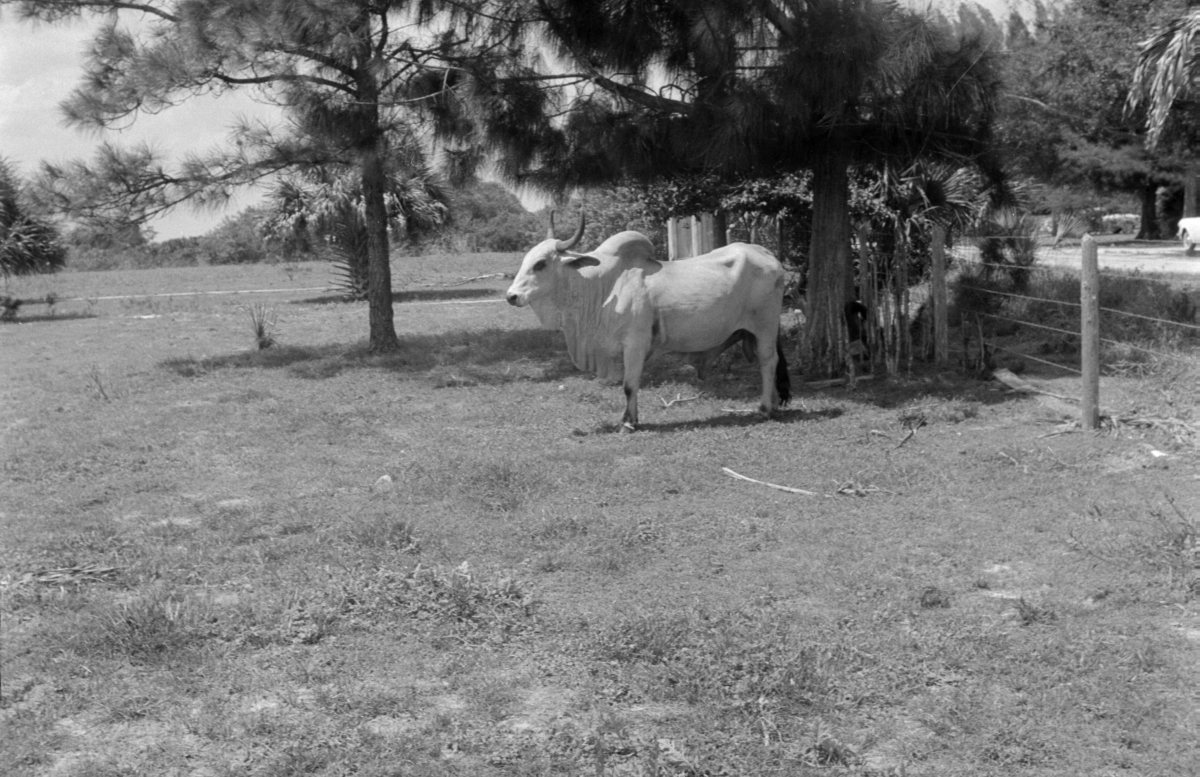Description of previous item
Description of next item
To Fence or Not to Fence
Published December 12, 2014 by Florida Memory
If you get very far off the interstate in Florida, you’re likely to drive past a cow pasture or two. Say what you will about the American West, but Florida has been in the cattle industry for centuries. Many aspects of the business have changed over time, of course. Perhaps the most profound change has been the fence that separates you and your car from those cows as you drive past.
A hundred years ago, the idea of fencing the open range was widely considered dangerous to the cattle industry, and any farther back than that it was simply unthinkable. By the 1950s, however, legislators had passed a law requiring cattle owners to confine their animals. This transformation of public opinion on cattle fencing was rooted in the transformation of Florida itself.
Until the early 20th century, most cattle owners did not fence their cows at all. They allowed the animals to wander the open range, going wherever they could find the best grass. Vast tracts of land were still held at this time either by the state or by absentee owners who made no effort to prevent cattle ranchers from using their property for range purposes. Stamping the cows with unique brands allowed the owners to distinguish their cattle from everyone else’s. When it was time to move the cattle to market or pen the new calves up for branding, the cattle workers would round up the animals, often with the aid of cattle dogs, and drive them to wherever they needed to go. This was a particularly beneficial system for smaller cattle operations, who often didn’t have much land of their own. With a smaller population and less development, the open range system allowed all cattle owners to take advantage of Florida’s expansive territory.
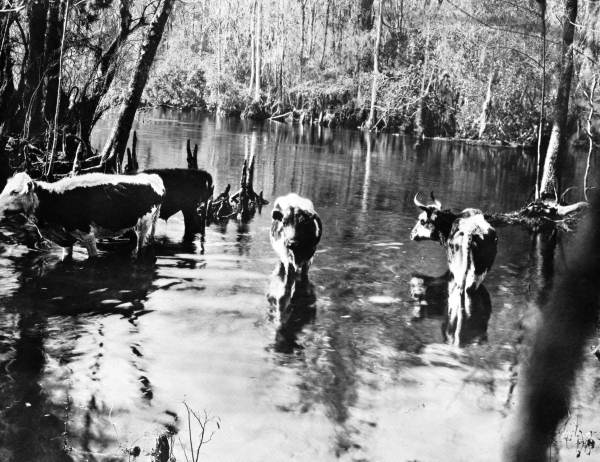
In the days before cattle had to be fenced, there was no telling where you might find cows in Florida. In this photo, several cows enjoy a drink near Wakulla Springs (circa 1920s).
As Florida’s population expanded and railroads and automobiles became more common, modernity came increasingly into conflict with the open range method. Trains and cars often encountered cows on their respective roadways, sometimes with fatal results. Additionally, sometimes cows wandered into towns or homesteads and made nuisances of themselves. Many Floridians began calling for a “fence law” to require cattle owners to confine their cows. Some cattle owners were unopposed to this, especially those who owned more valuable “blooded” cattle. A number of other ranchers depended on the free range system to have enough land to feed and water their cows. They saw the prospect of a fence law as a serious threat.
The debate could be nasty at times. As property owners began fencing their land to manage the movements of the cows, some disgruntled fence opponents would cut the wires or shoot the cows the fence was meant to contain. The state enacted laws to punish fence cutters, but the perpetrators were often difficult to catch. One cattleman went to extreme measures and tied live rattlesnakes up near all of his fence posts to prevent his wires from being cut!
On June 7, 1949, Governor Fuller Warren approved Senate Bill 34, which finally enacted a law requiring livestock owners to keep their animals off the public roadways. Cattle owners who did not comply faced stiff fines, and potential liability for damages caused by free roaming cows.
Be sure to check out our Florida Cattle Ranching photo exhibit for more images relating to this historic Sunshine State industry!
Cite This Article
Chicago Manual of Style
(17th Edition)Florida Memory. "To Fence or Not to Fence." Floridiana, 2014. https://www.floridamemory.com/items/show/295240.
MLA
(9th Edition)Florida Memory. "To Fence or Not to Fence." Floridiana, 2014, https://www.floridamemory.com/items/show/295240. Accessed December 23, 2025.
APA
(7th Edition)Florida Memory. (2014, December 12). To Fence or Not to Fence. Floridiana. Retrieved from https://www.floridamemory.com/items/show/295240

 Listen: The Latin Program
Listen: The Latin Program